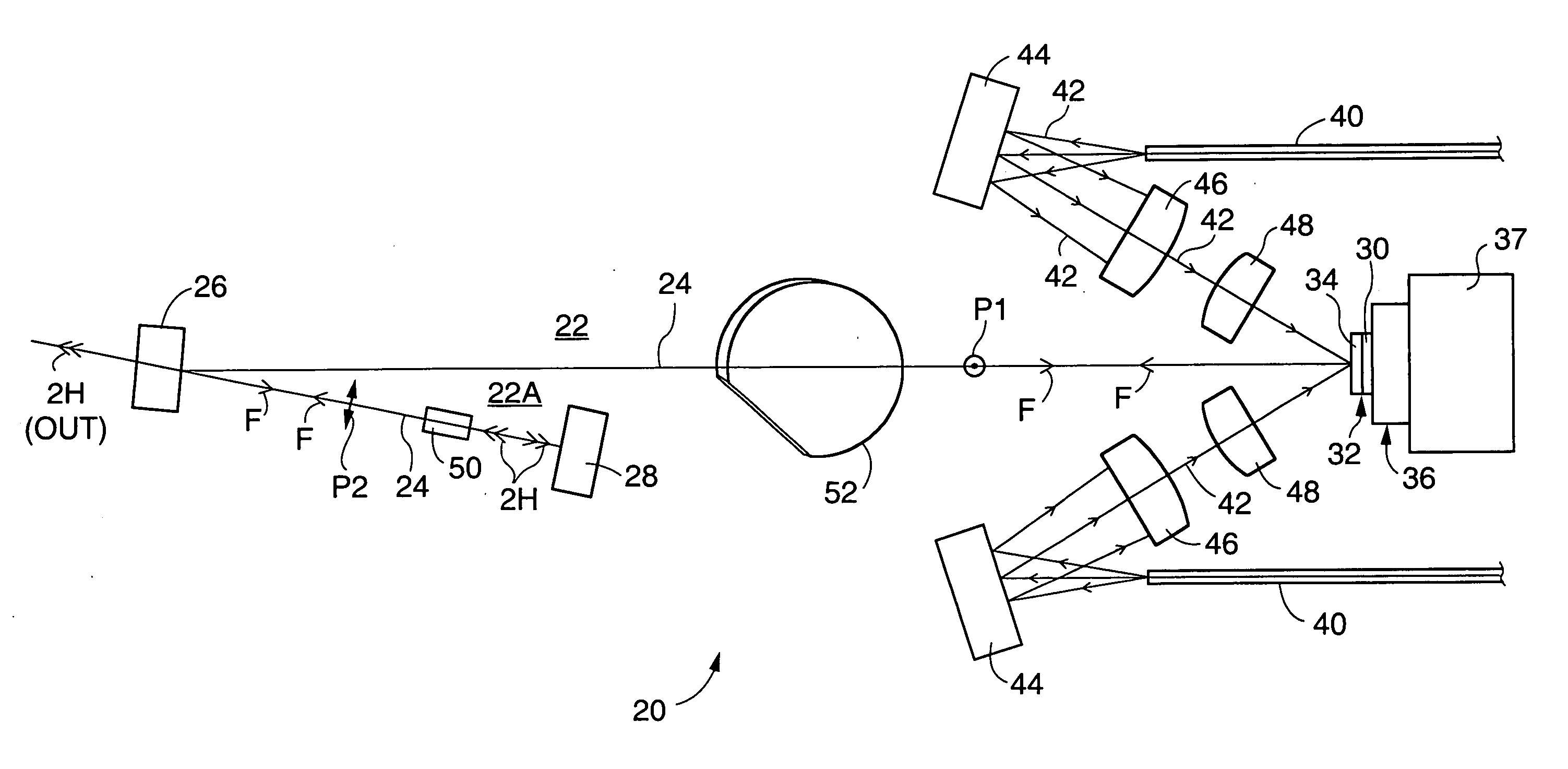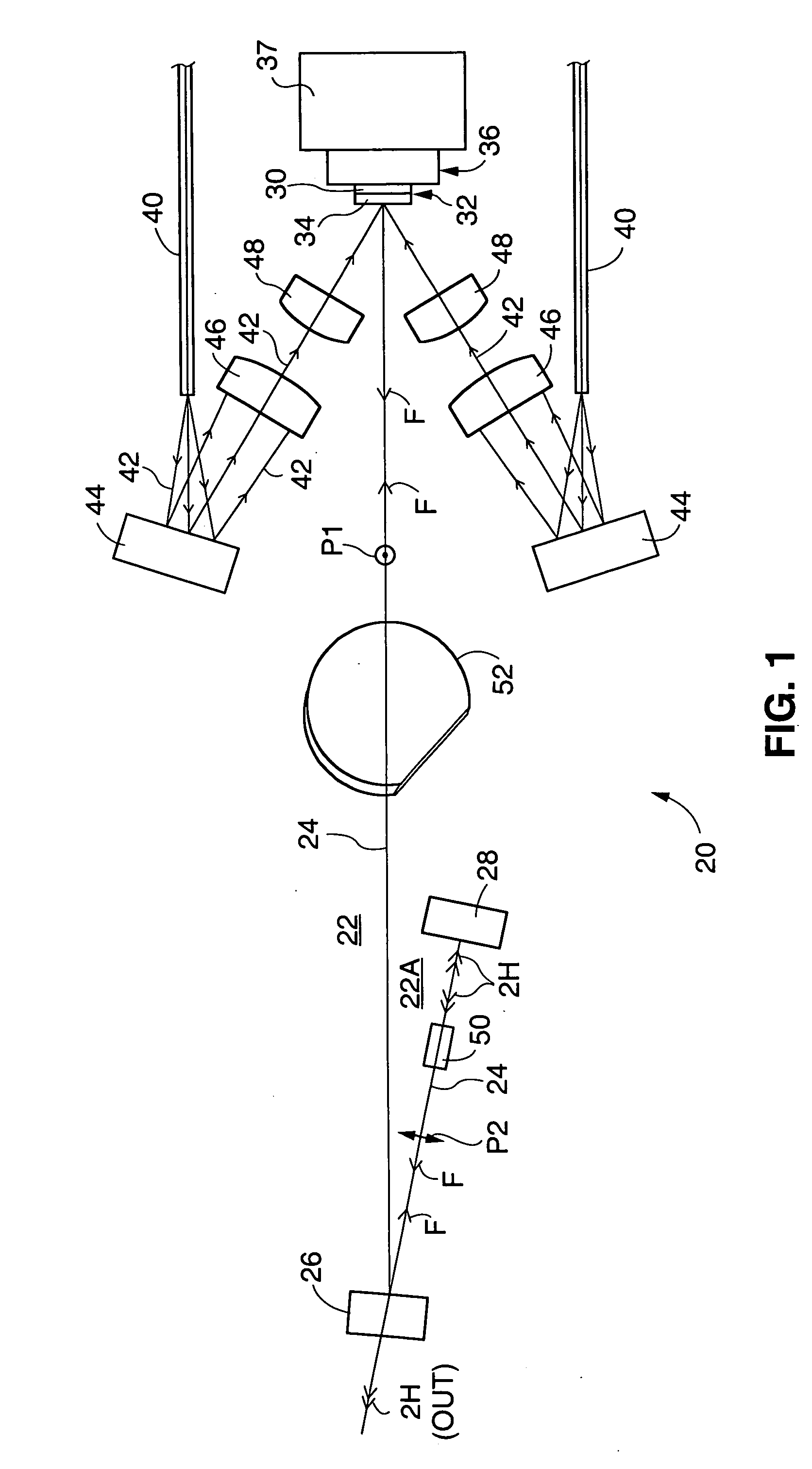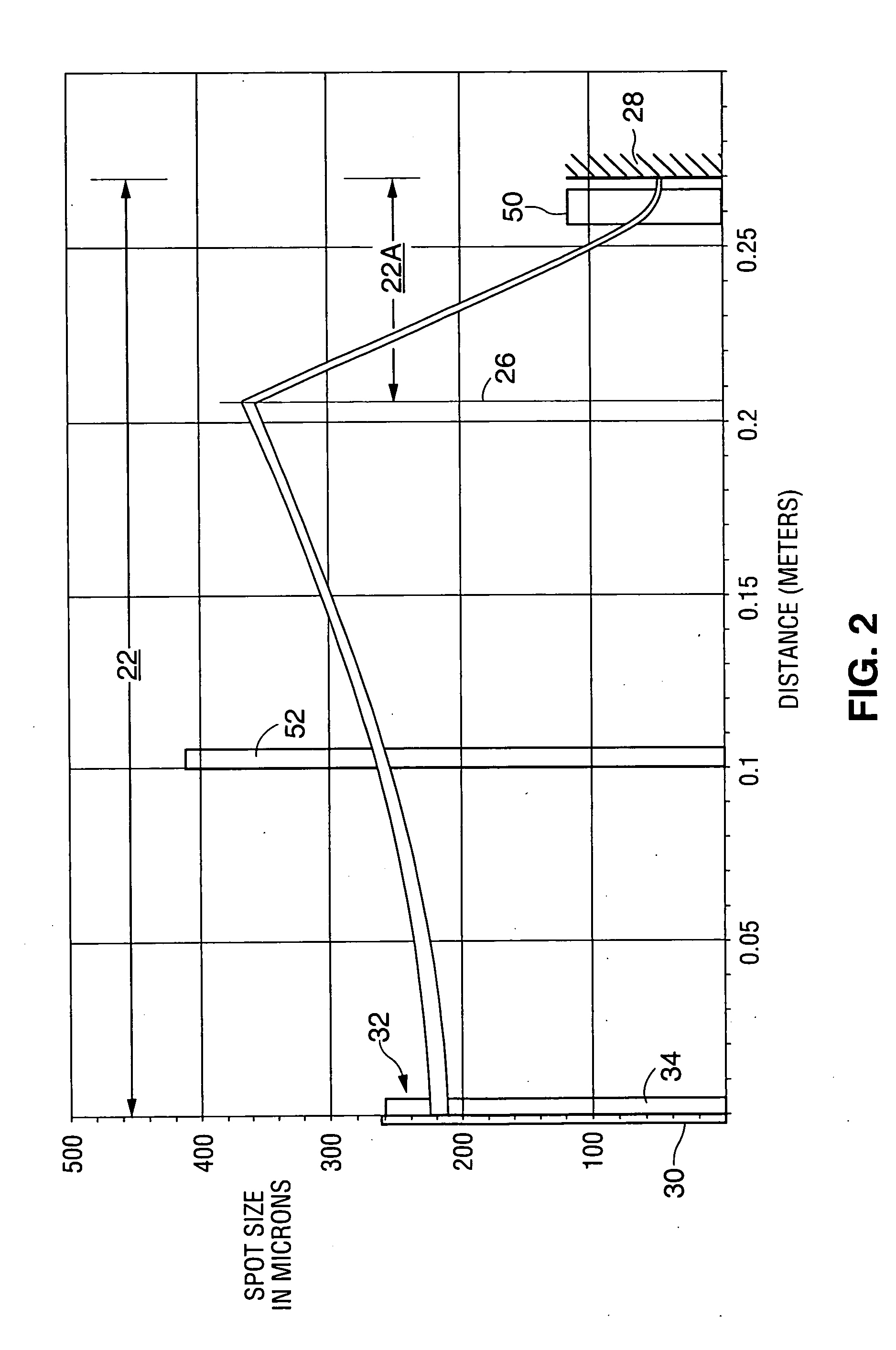High-power external-cavity optically-pumped semiconductor lasers
a technology of optically pumped semiconductor lasers and external cavities, which is applied in the direction of lasers, semiconductor lasers, optical resonator shapes and construction, etc., can solve the problems of not being able to provide adequate power for such applications, and prior-art ops-lasers, for example, are far short of the optimum wavelength for such applications, so as to increase the laser output power, increase the fundamental mode size, and ensure the effect of operation temperatur
- Summary
- Abstract
- Description
- Claims
- Application Information
AI Technical Summary
Benefits of technology
Problems solved by technology
Method used
Image
Examples
Embodiment Construction
[0038] Turning now to the drawings, wherein like components are designated by like reference numerals. FIG. 1 schematically illustrates an OPS-laser 20 in accordance with the present invention. Laser 20 includes a resonator 22 having a longitudinal axis 24 thereof folded by a fold-mirror 26. Resonator 22 is terminated at one end thereof by a flat mirror or reflector 28, and at the other end thereof by a mirror portion (mirror-structure) 30 of an OPS-structure 32. A gain portion (gain-structure) 34 of OPS-structure 32 is thus located in the resonator in contact with a resonator mirror, i.e., mirror-structure 30.
[0039] Gain-structure 34 of OPS-structure 32 is an epitaxially-grown monolithic semiconductor (surface-emitting) multilayer structure including a plurality of active layers (not shown in FIG. 1) spaced apart by pump-light-absorbing separator-layers (also not shown in FIG. 1). It should be noted here that the terminology “spaced apart by pump-light-absorbing separator layers” ...
PUM
 Login to View More
Login to View More Abstract
Description
Claims
Application Information
 Login to View More
Login to View More - R&D
- Intellectual Property
- Life Sciences
- Materials
- Tech Scout
- Unparalleled Data Quality
- Higher Quality Content
- 60% Fewer Hallucinations
Browse by: Latest US Patents, China's latest patents, Technical Efficacy Thesaurus, Application Domain, Technology Topic, Popular Technical Reports.
© 2025 PatSnap. All rights reserved.Legal|Privacy policy|Modern Slavery Act Transparency Statement|Sitemap|About US| Contact US: help@patsnap.com



